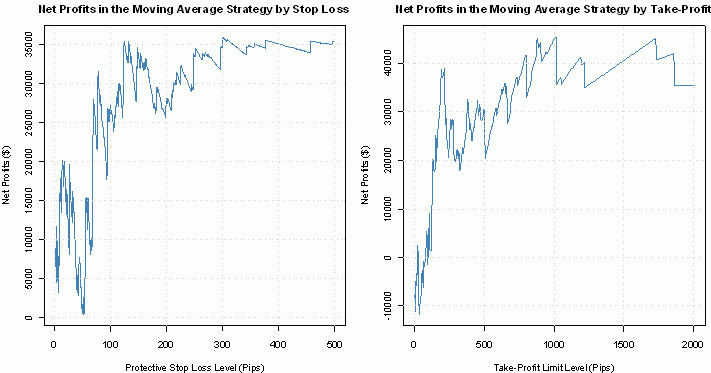Stop Loss Strategies For Good Money Management
Post on: 8 Июнь, 2015 No Comment

Stops are definitely important given the volatile conditions of today’s domestic and international economy. They are an enormously important part of a trader’s arsenal of trading tools and some traders confirm that stops are the most important part of their trading armor. Use stops to protect your capital and lock in profits in stock, futures, and Forex trading.
Your risk tolerance should be a factor taken from your game plan and then used to help you determine what type of stop to use. Do be sure to use a REAL stop in the marketplace! A friend of mine joked with me that that he had never seen a mental stop filled in the pits.
Common Stop Loss Strategies
Dollar Stop
Maybe the simplest type of stop, you are risking a predetermined dollar amount for a single trade. Let’s say you want to risk $500 on a grain trade or $750 on a stock trade. You would simply figure from your fill price where to put your stop. This type of stop does not follow the price action of the marketplace, but rather creates an exit point from the predetermined value set by by the trader.
Percentage Stop
Similar to a dollar stop, this type of stop is also a very simple way for you to place a stop on a position. Rather than setting a predetermined dollar amount, the trader specifies a percentage they are willing to risk for a single trade. Let’s say your trading account is $100,000 and you only want to risk 1% on any one trade. You simply take a $1,000 risk, which represents 1% of your total account. This can help enormously in preventing BIG LOSSES. However like the dollar stop, this type of stop does not follow the price action of the marketplace, but rather creates an exit point from the predetermined percentage set by by the trader.
Chart Stop
A chart stop is based on the price action of the marketplace. By observing price action, you will notice times when prices can’t seem to break beyond certain levels. You can then use these support and resistance levels to place a stop that is either above or below those crucial chart levels. Setting stops beyond these levels can help protect your account as more traders get in on the break and push your position against you. This type of stop is not as effective in a thinly traded market, but more appropriate for a highly liquid and active market.
Pros: Very easy to implement and use.
Cons: Can’t be used in thinly traded markets.
The Importance Of Stops
Some traders may question the importance of stops and be concerned about putting a stop in the market, only to be quickly stopped out for a loss. Nothing could be further from the truth! Stops allow traders to protect and grow their capital. You can use the different types of stops to your advantage, and tailor them to your strategy and the type of market you are trading. Let stops work for you! They only risk what you decide is worth it.
There is nothing new in the markets as financial history always repeats itself, which reminds me of one of my favorite market quotes. Former Fed chairman Alan Greenspan came up with the term irrational exuberance in a speech given at the American Enterprise Institute during the stock market boom of the 1990s. The phrase was interpreted by financial pundits as a typically cryptic warning that the market might be overvalued. Although it is sometimes believed that Greenspan’s comment was made near the height of the dot-com boom (and contributed to its downfall), it was actually said much earlier in December 1996.

The Secret To Good Money Management
Diversification and stops should be part of your money management suite of tools. In my opinion, there are two additional elements that help complete a successful money management strategy. I am talking about the importance of using FOCUS and DISCIPLINE. You must have these elements in your money management toolbox if you are going to succeed and make the kind of money that allows you to enjoy the good life. Just imagine not having to worry about Fed actions, or stressing out about whether or not some companies’ earnings are going to miss expectations.
Here are Warren Buffett’s two most important rules to investing:
Rule Number 1: Never lose money.
Rule Number 2: Never forget Rule Number 1.
If you follow this advice you will be very successful, perhaps like Mr. Buffett?
Excerpt From: Adam Hewison. 5 Professional Trading Rules That Will Make You Successful In Any Market! INO.com, 2012. iBooks. This book is a Free Download on an iPad or any Mac running OS Mavericks.
No iPad? No worries, I have a PDF version for you.














